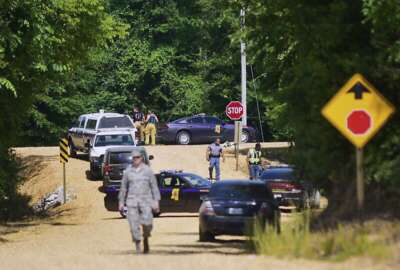

High operational tempo, decreased aircraft availability and potential for complacency during routine tasks as factors putting pilots and airmen at risk.
After taking a long look at the safety of its aircraft and flying practices, the Air Force has concluded that stress, a lack of training and pressure to perform the mission are potential safety risks that require increased attention from wing commanders.
The Air Force ordered the review after 14 people died in seven flying incidents between mid-March and early-April this year. In May, a C-130 crashed in Georgia, killing nine airmen.
The review blames stress posed by high operational tempos and lack of time to properly focus on flying basics as two of the reasons for incidents. The report also blamed the Air Force’s cultural tendency to always execute the mission, a decreased aircraft availability and the potential for complacency during routine tasks for mishaps in 2018.
The review’s findings were given to field, flying and maintenance leaders to address issues and inform future decisions.
“We’re taking necessary steps to ensure our airmen operate as safely as possible in an inherently dangerous business,” Air Force Chief of Staff Gen. David Goldfein said in a Monday statement.
The review followed a one day safety stand down for all flying and maintenance wings, which Goldfein ordered in early May.
“We cannot afford to lose a single airman or weapons system due to a mishap that could have been prevented,” said Goldfein. “Our men and women have volunteered to give their last full measure for America’s security. My intent is to have commanders lead focused forums with their airmen to help identify gaps and seams that exist or are developing, which could lead to future mishaps or unsafe conditions.”
The review examined leadership and supervision engagements; training; mission planning, briefings and debriefings; risk management; flightline operations; experience in the force; and fundamental focus.
Active duty wings were given until May 21 to finish their reviews, while guard and reserve wings had until June 25.
The Air Force said it is already taking steps to reduce stress and burden from pilots and other airmen by adding support capabilities back into squadrons, reducing additional duties and cutting back staff requirements.
The aircraft incidents earlier this year caused lawmakers to worry about the training and readiness of the force.
The 2019 defense authorization bill establishes a national commission on military aviation safety. The panel will study aviation mishaps and make recommendations on changes to training, maintenance, personnel and other policies.
Copyright © 2024 Federal News Network. All rights reserved. This website is not intended for users located within the European Economic Area.
Scott Maucione is a defense reporter for Federal News Network and reports on human capital, workforce and the Defense Department at-large.
Follow @smaucioneWFED
